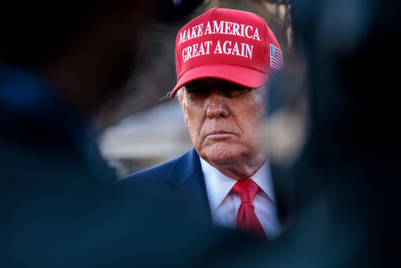
Editor's note: We'll be featuring 2017 Outlook content from the latest issue of Campaign all this week. Subscribers can see it all now in the emagazine.
While many of us were watching the news on the night of 8 November, to get an early read into what would unfold on a larger global platform as Americans came out to vote their next president, none of us were quite prepared for news closer to home. Prime Minister Modi announced the immediate demonetisation of the 500-rupee and 1,000-rupee notes. More than a month later, this continues to dominate our conversations, and shall do so as we enter 2017 bringing with it an element of uncertainty.
Marketers believe the disruption impacting their business will continue well into Q1 of 2017, albeit to a lesser degree. Marketers are further burdened by the task of futureproofing firms ahead of the proposed rollout of India’s GST by April.
The GST is a great opportunity to reboot and transform business processes and will result in both simplification and improved competitiveness. However, the migration process will have to be handled meticulously both in terms of building a foolproof compliance mechanism without derailing routine business.
But even as we enter 2017 with some degree of uncertainty, we can look forward to make the year count and exit it with the promise of a more efficient and competitive future.
As a fallout, there will be a short-term move towards efficiencies equating to better media pricing. We often talk of taking the conversations away from pricing because surely we have come a long way from volume and price being a defining metric to what we do. However, let’s face it: it’s in our lexicon and is not going away.
But when two of America’s largest advertisers bought into the promise of an unknown (and unnamed at the time) agency earlier this year, you feel blessed for being a part of this industry. Our industry has been in a perpetual state of evolution, and we just ushered in another one — the promise of data driving insights and informing spending.
It is important to note that Omnicom Media Group launched Hearts & Science in early 2016, but it is the result of a well-planned vision to build data expertise and capabilities way before the rest of the industry picked up on it.
As we enter 2017 with its challenges and uncertainties, it is critical we continue to keep building and investing in data expertise and capabilities. It’s all part of delivering insights that facilitate better and newer audience-segmentation and therefore smarter media spending.
Looking ahead, the industry’s discussions will no longer be about whether TV spends will go up or print spends will move to digital in 2017. Instead, we will talk almost entirely be about our approach. It will not be about just where we spend it, but how smartly are we delivering content and media to address our newly defined audience segments. Our audiences are leaving a data trail and we need to act on it immediately.
To provide perspective, OTT has already taken root in India and soon we will see a generation of viewers for whom ‘appointment viewing’ has no meaning. Device agnostic and primetime indifferent, these audiences leave an interesting data trail. Club that with other behavioural data points and we now have potentially multiple, powerful segments of consumers that are best served with insightful and unique creative and media spending.
And barely has the OTT dust settled when Reliance Jio announces its entry with big plans and subscriber base claims that are truly over the top.
Clearly our mobile phones are going to see a lot more action, as focus shifts from voice to more data demand opportunities. Facebook, WhatsApp, even more OTT on mobile.
We have not even started to see the real impact of the government’s desire towards a cashless economy. If the government stays its course on policy, e-commerce and the initiatives towards a cashless economy will see behavioural changes of a heightened magnitude. Delivering on the data-driven promise will no longer be a choice we make but a way we do business.
Finally, for us to take advantage of these evolving data opportunities we need to be on top of our game on several levels — technology, talent and collaboration. Providing smarter solutions based on data driven insights requires us to continue investing in technology and talent. Together, they will deliver valuable insights that will further inform not just how we communicate but what we communicate.
However, the benefits will be limited in isolation. Collaboration with our client partners and stakeholders will be more critical to the process and to our collective success.
 Jasmin Sohrabji is CEO, India & SEA, Omnicom Media Group. Jasmin Sohrabji is CEO, India & SEA, Omnicom Media Group. |



.jpg&h=334&w=500&q=100&v=20250320&c=1)

.jpg&h=334&w=500&q=100&v=20250320&c=1)
.jpg&h=334&w=500&q=100&v=20250320&c=1)
.jpeg&h=334&w=500&q=100&v=20250320&c=1)

.jpg&h=334&w=500&q=100&v=20250320&c=1)
.jpg&h=334&w=500&q=100&v=20250320&c=1)


.jpg&h=268&w=401&q=100&v=20250320&c=1)



.jpg&h=268&w=401&q=100&v=20250320&c=1)
.jpg&h=268&w=401&q=100&v=20250320&c=1)
.jpg&h=268&w=401&q=100&v=20250320&c=1)